RF & Microwave Engineering Blog Posts

Evanescent Component of the Nonparaxial Gaussian Beam
The evanescent component of the nonparaxial Gaussian beam background field is available as a feature in the Wave Optics and RF modules as of COMSOL Multiphysics® version 5.5.

Measuring the SAR of a Human Head Next to a Wi-Fi Antenna
Many wireless devices include antennas that expose consumers to RF energy. Designers of these devices need to understand the health implications caused by electromagnetic exposure, such as SAR.
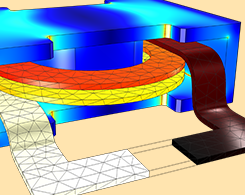
Which Study Type Should I Use for My Electrothermal Analysis?
What’s the best interface to use when implementing electrothermal analyses in COMSOL Multiphysics? We go over the interfaces, study types, and multiphysics couplings for high and low frequencies.
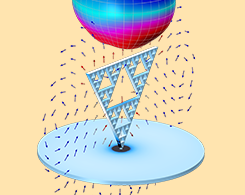
What Is the Curl Element (and Why Is It Used)?
When solving some electromagnetics problems, the curl element (also called the edge element or vector element) can be used in the finite element method.

Optimizing Microwave Ovens with Solid-State RF Cooking
Did you know that conventional microwave ovens use the same magnetron technology that was first used in WWII? These researchers thought it was time for an upgrade…
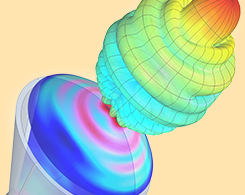
How to Produce 3D Far-Field Plots from 2D Axisymmetric RF Models
When modeling certain resonant structures, you can get the best of both worlds: 2D axisymmetry offers efficient computations while 3D far-field plots are available for postprocessing results.

How to Use Circular Ports in the RF Module
Degeneracy in circular ports leads to uncertainty in the mode field orientation. Not so with the Circular Port Reference Axis feature, which lets you define field orientations on port boundaries.
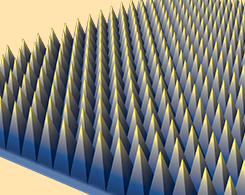
How to Numerically Simplify Your Periodic RF Models
Looking for an easier way to model periodic RF structures, such as frequency selective surfaces, electromagnetic band gap structures, reactive and high impedance surfaces, and metamaterials?
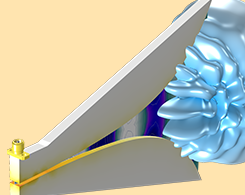
Your Guide to the Physics Interfaces and Studies in the RF Module
The RF Module includes 4 physics interfaces and studies that you can use to analyze electromagnetic wave propagation and resonance behavior in your RF analyses.
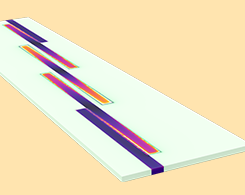
Your Guide to Lumped Ports in the RF Module
Your guide to the 4 different types of lumped ports that you can use for your RF analyses, as well as the different modeling scenarios in which each type is applicable.
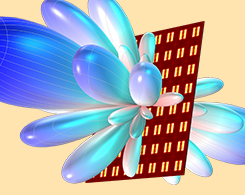
How to Synthesize the Radiation Pattern of an Antenna Array
You can study and prototype a phased array antenna without analyzing the entire structure through a full 3D wave equation (saving time and computational costs) by using an antenna array factor.
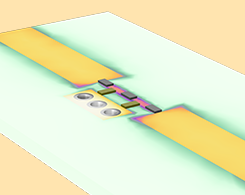
How to Simplify a Two-Port Device Model Using a Touchstone File
Say you’re modeling a two-port device and want to reduce the computational resources involved. We demonstrate one way to do so, involving a Touchstone file…
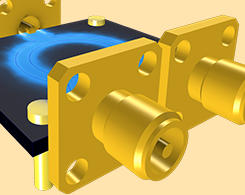
RF Module Part Library: An Easier Way to Model RF Devices
Sometimes, your models need to include connectors. Instead of spending time creating geometries for each connector, you can simply add them from the Part Library.

Keynote Video: Optimizing Test Connector Designs with RF Simulation
At Signal Microwave, RF simulation is used to optimize test connector designs quickly and efficiently, giving the organization a unique advantage when it comes to being a small business.
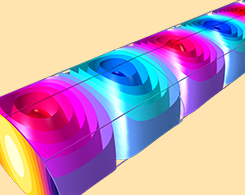
How to Use Numeric Ports in Your RF Analyses
When performing RF analyses in the COMSOL® software, you can use numeric ports to compute the mode of a port with an arbitrary shape. This demonstration includes a waveguide adapter example.
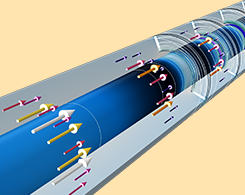
RF Signal Transformation Between the Time and Frequency Domains
Want to make your RF and microwave device modeling more efficient? Read this blog post to learn how to implement the fast Fourier transform in your simulations.

Optimizing the Performance of a Dielectric Resonator Antenna
Dielectric resonator antennas (DRAs) have a storied history that began in the 1800s. Today, they are used in satellite, radio, and nanophotonics, and even show potential in 5G communications.

Investigating a Three-Port Ferrite Circulator Design with RF Simulation
Get a quick introduction to microwave circulators and modeling them with the RF Module. The featured example is a three-port ferrite circulator.
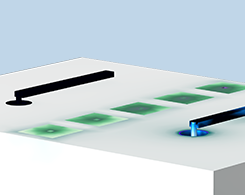
Studying the Decoupling Effect of Electromagnetic Band Gap Structures
Electromagnetic band gaps (EBGs) can suppress unwanted EMI and increase desired EMC between antennas, improving their performance. Learn how to study this decoupling effect via simulation.
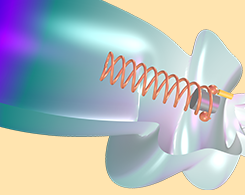
Analyzing Operating Mode Options for Helical Antennas
Simple but effective, helical antennas are used in smart implants, RFID, radio, GPS, space probes, and more. You can use RF simulation to analyze the operating mode options for these antennas.
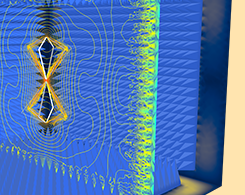
Smart(er) Healthcare: Designing RFID Tags for Biomedical Applications
Bioengineering meets RF simulation in this blog post about designing RFID systems that can be used for safe and optimized patient care.

Simulating an SMA Connector on a Grounded Coplanar Waveguide
SMA connectors are used in cellphone antennas and PCB testing. To optimize their performance for a specific use, electrical engineers can evaluate their designs with simulation.
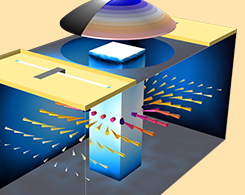
High-Fidelity Modeling of a Tunable Filter via Multiphysics Simulation
Tunable cavity filters can enhance the development of high-speed, wireless communication networks. To optimize these devices for such a purpose, we can turn to high-fidelity modeling.
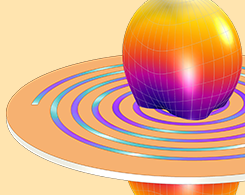
Designing Spiral Slot Antennas with Electromagnetics Simulation
Spiral slot antennas have nearly perfect circularly polarized radiation and wideband frequency response, and they can maintain a consistent radiation pattern and impedance over large bandwidths.
